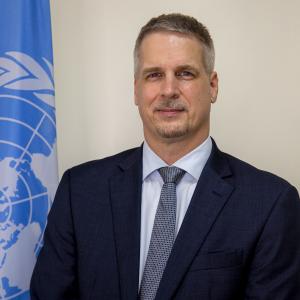It is with pleasure for me to speak at the UN Trade and Development workshop focused on ASYREC - the Automated System for Relief Consignments – and the potential benefits it has for the Pacific region.
This is the second such event, with the first session taking place in March of this year and I am aware that many of you in attendance today also participated in the last session.
The fact that you are back to take a refresher helps to demonstrate, firstly, the value in this seminar and the topics covered within it, but also the need for us to stay on top of our emergency response skills and keep them fresh and sharp for if and when we will need them.
It is a fact that living in the Pacific region, this is more likely to be a “when” rather than an “if”.
This fact reinforces why systems like ASYREC and sessions like this week-long seminar are of critical importance. The work you do together in Fiji today, representing fourteen countries from our Pacific region, will save lives in the years to come.
UN Trade and Development’s work in this region, building a partnership between Pacific Island states and the UN through the ASYCUDA Support Mechanism for the Pacific (ASMP) started in 2002.
The ASMP brings together different governments to better support the region, collaboratively. ASMP has been a key component for customs digitalization in the Pacific and, as such, I am pleased to see the involvement of UN Trade and Development trade facilitation experts later today and also tomorrow.
One cannot talk about customs digitalization in our region without acknowledging the financial support given to Pacific Island governments and UN Trade and Development by the European Union and the governments of Australia and New Zealand through the Pacific Regional Integration Support Programme (PRISE) and Pacific Agreement on Closer Economic Relations (PACER Plus).
Since 2021, these two projects alone have led to the roll-out of the ASYCUDAWorld customs management system in 15 Pacific small island developing states.
To consider now the real focus of this seminar.
For those of you who are meeting ASYREC for the first time, this is a system that was developed by UN Trade and Development’s ASYCUDA Programme in partnership with the UN Office for the Coordination of Humanitarian Affairs (OCHA).
ASYREC was first installed in Vanuatu, has components operational in Turkmenistan and its technology is facilitating the import of humanitarian relief into Afghanistan.
It is a system that helps governments to prepare for disasters and then enables the prompt importation of needed humanitarian aid during an actual emergency.
I note that on Wednesday, Thursday and Friday, you will be participating in a simulation exercise to learn how ASYREC can work in practice.
I hope you all enjoy this and take on board how the system can help governments to prepare for, respond to, and eventually bring to a close an emergency response.
It is through exercises such as these that we can identify the difficult to predict issues and prepare as best as possible for humanitarian emergencies themselves.
The need to prepare for the worst is a necessity in uncertain times, and I hope you find this seminar both of interest and of use, but also enjoyable.
I wish you all an excellent and productive week.






